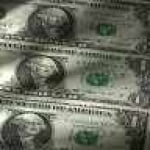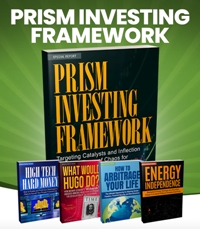These must have been the thoughts and emotions that raced through Gary Hoy’s head as he rapidly fell towards the street below.
Moments before, the 38-year-old lawyer at the Toronto law firm, Holden Day Wilson, had been standing in his 24th floor office. Hoy, who also had a degree in engineering, specialized in building safety and compliance. His academic training had instilled an unwavering faith in the unbreakable nature of his office’s floor-to-ceiling glass.
To demonstrate the strength of these windows, and the robust safety codes they were designed to, he frequently threw himself against them. This stunt was always greeted with gasps and cheers.
On July 9, 1993, Hoy was giving a tour of his office to a group of students. After detailing the rigorous design and safety standards of the windows, it was now time to teach his students a valuable lesson. Like many times before, he took a running start and hurled himself against the glass. But then the impossible happened…
While the glass didn’t break, it popped out of its frame. Hoy plummeted to the pavement below where he died upon impact.
Speaking about the incident to the Toronto Star, a structural engineer later said: “I don’t know of any building code in the world that would allow a 160-pound man to run up against a glass window and withstand it.”
Hoy’s death was classified as ‘accidental auto-defenestration’ (causing yourself to fall out of a window). He was remembered as ‘one of the best and brightest’ at the firm.
Hoy, without question, had an unreasonable faith in codes and standards. He thought they would protect him from acts of extreme recklessness. He was wrong.
Dollar Faith
Like Hoy, America’s leaders have an unreasonable faith in the strength of the U.S. dollar. Decades of extreme recklessness have demonstrated that the dollar always endures, without question, no matter what.
The dollar’s persisted over decades of runaway budget deficits and a national debt that’s now over $36.7 trillion. The dollar’s persisted through $9 trillion of quantitative easing. The dollar’s persisted through numerous bank bailouts and senseless wars. The dollar’s persisted through coronavirus give aways and stimmy checks.
This track record of dollar success through extreme recklessness has misled the U.S. government. Washington believes the dollar can withstand whatever it throws at it. That, no matter what, the dollar will be the reserve currency for global trade and commerce.
This expectation may soon be proved false. The events that took place in the immediate aftermath of President Trump’s Liberation Day tariffs portend a day, in the not-too-distant future, where the dollar rapidly plummets in value.
If you recall, on April 3, the NASDAQ dropped 5.97 percent, the S&P 500 lost 4.84 percent, and the Dow fell 3.98 percent. The following day, April 4, China imposed a 34 percent retaliatory tariff. The NASDAQ then lost another 5.82 percent, the S&P 500 dropped 5.97 percent, and the Dow fell 5.5 percent.
Within two days of Liberation Day, the NASDAQ declined over 11 percent, the S&P 500 fell by 10 percent, and the Dow dropped over 9.48 percent. In total, over $6.6 trillion was lost, which amounts to the largest two-day loss in history.
This was also the first time the Dow shed over 1,500 points a day over two consecutive days. It was also the worst ever two-day period for the S&P 500.
The real excitement, however, was in the Treasury market…
Sharp Reversal
As the stock market crashed, demand for bonds initially rose, pushing bond yields – which move inverse to price – down. The yield on the 10-Year Treasury Note fell to 3.86 percent on April 4, its lowest yield since October 2024.
This initial decline in yield was greeted with applause. When yields fall, interest rates on loans like mortgages also fall, making borrowing money cheaper. Falling interest rates also lower financing costs on government debt.
Team Trump said this was all part of its plan to cut borrowing costs. It even claimed the decline in interest rates was one of the many fringe benefits of the tariff policies.
But then something unexpected happened. The bond market sharply reversed and began crashing too, sending yields higher.
The yield on the 10-Year Treasury Note spiked up to 4.5 percent by the morning of April 9. At the same time, the yield on the 30-Year Treasury Bond surged 54 basis points to 4.92 percent, its biggest three-day jump since 1982. The rapid spike in yields caused traders and government officials to freak out.
Was the bond sell-off due to rising tariff driven inflation expectations? Was it forced by margin calls amid the stock market crash?
Or were U.S. government bonds being dumped by foreign investors and governments who were losing trust in the U.S. government? Asked another way, do foreign investors and governments no longer trust that the USA is a safe and stable place to hold money?
By April 9, Treasury Secretary Scott Bessent and Commerce Secretary Howard Lutnick convinced Trump that the bond market sell-off was too much to endure. Trump announced a 90-day tariff pause, except for China.
The stock market has since surged, and bond yields have retreated. We expect this relief will be short lived. Too much damage has been done…
Triggering the Dollar’s Fateful Demise
The dollar, as measured by the dollar index, is down about 7.68 percent since January 1. In the world of currencies, a 7.68 percent decline over four months is massive.
This means that even without Trump’s tariffs, imports will be more expensive. At the same time, American exports will be more competitive, which supports Trump’s intent to boost American manufacturing through a weaker dollar.
Gold, another barometer of the dollar’s loss of value, is up over 21 percent year-to-date. Gold’s price increase has been driven by record demand from central banks.
According to the World Gold Council, central banks collectively added 1,045 tons to their global reserves in 2024. This marked the third consecutive year of central bank purchases exceeding 1,000 tons and is well above the average 473 tons per year between 2010 and 2021. During Q1 of 2025, central banks added another 244 tons to their global reserves.
However, it isn’t just central banks who are buying gold. In 2025, investor demand for gold has also significantly increased. Per Discovery Alert:
“The correlation between tariff announcements and gold price movements has become increasingly pronounced. Data shows that major trade policy declarations over the past 18 months have coincided with gold price increases averaging 2.3% in the week following such announcements, compared to a historical average of 0.7% during non-announcement periods.
“Institutional investors have responded by increasing their precious metals allocations, with gold ETF holdings growing by 14% year-on-year in 2025. This shift reflects diminished trust in US dollar assets due to erratic policy implementation and concerns about retaliatory measures from trading partners that could further destabilize global markets.”
The message is clear. Central banks and investors are losing trust in the dollar as a stable reserve asset. Diversifying assets outside of the dollar makes prudent, logical sense.
What’s more, this week the Commerce Department reported that U.S. GDP contracted by 0.3 percent in Q1 2025. Should the U.S. economy continue to shrink, Washington will be compelled to stimulate growth via the printing press.
With the already widespread lack of confidence, further trashing the dollar to stimulate growth could be the final trigger for a complete loss of trust. Then, like Hoy, and to the regret of dollar holders the world over, the dollar could plummet to its fateful demise.
[Editor’s note: Gold has already soared past $3,200 an ounce. But with this ‘backdoor’ strategy, you can gain exposure to over an ounce for just $20. The stage is set for a major gold boom. Don’t miss out—click here for urgent details on the #1 gold play of the year!]
Sincerely,
MN Gordon
for Economic Prism
Return from Triggering the Dollar’s Fateful Demise to Economic Prism






Decrease in GDP is because government spending is included in calculating GDP. Federal Government spending has been cut, DOGE, and swamp draining is the result.
Gold price has decreased because of margin calls. Also, paper gold, not real gold covers the calls. The market treats paper as real gold.